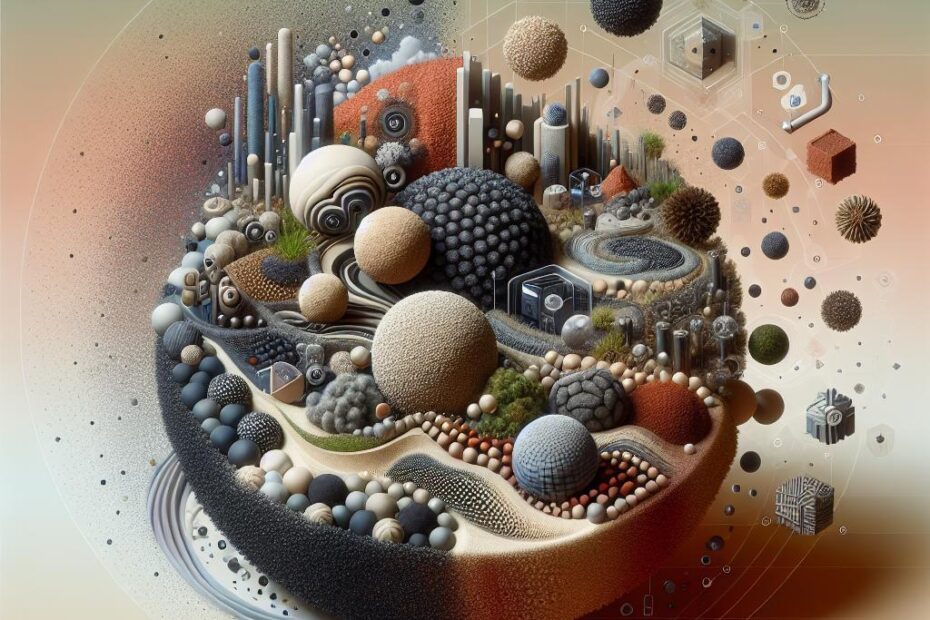Title: Is Soil a Mixture or a Pure Substance? Understanding the Composition of Earth’s Foundation
Introduction:
When we think of soil, we often picture it as a homogeneous substance that serves as the foundation for plants to grow. However, the reality is that soil is a complex and dynamic mixture of various components that work together to support life on Earth. In this article, we will explore the question: is soil a mixture or a pure substance?
What is Soil?
Soil is a vital component of our ecosystem, providing nutrients for plants, acting as a filter for water, and serving as a habitat for countless organisms. The composition of soil varies depending on factors such as climate, geography, and human activity. Soil is typically made up of mineral particles, organic matter, water, and air.
Is Soil a Mixture?
Soil is considered a mixture rather than a pure substance. A mixture is defined as a combination of two or more substances that are not chemically combined. In the case of soil, it is composed of a variety of materials that are physically mixed together. These materials include:
-
Mineral Particles: Soil is made up of mineral particles such as sand, silt, and clay. These particles vary in size and shape, contributing to the soil’s texture and fertility.
-
Organic Matter: Organic matter in soil comes from decomposed plant and animal material. This material provides essential nutrients for plant growth and helps improve soil structure.
-
Water: Soil contains water, which is essential for plant growth and nutrient uptake. The amount of water in soil can vary depending on factors such as rainfall, irrigation, and drainage.
-
Air: Soil is not a solid mass but contains tiny spaces filled with air. This air is crucial for root respiration and the movement of gases within the soil.
Understanding the Composition of Soil:
The composition of soil can vary depending on factors such as location, climate, and land use. Different types of soil, known as soil horizons, can be distinguished based on their composition and characteristics. These horizons include:
-
Topsoil: The top layer of soil, rich in organic matter and nutrients, where most plant roots grow.
-
Subsoil: The layer beneath the topsoil, containing less organic matter and fewer nutrients, but still vital for plant growth.
-
Parent Material: The layer of soil where mineral particles originate, influencing the soil’s composition and properties.
Benefits of Healthy Soil:
Healthy soil is essential for sustainable agriculture, providing the foundation for food production and ecosystem services. Some benefits of healthy soil include:
-
Nutrient Cycling: Soil serves as a reservoir for nutrients that are essential for plant growth, cycling these nutrients through the ecosystem.
-
Water Filtration: Soil acts as a natural filter, reducing pollution and protecting water quality by absorbing and retaining water.
-
Carbon Sequestration: Healthy soil can store carbon, helping to mitigate climate change by reducing greenhouse gas emissions.
Practical Tips for Soil Health:
To maintain healthy soil and maximize its productivity, consider the following tips:
-
Minimize Soil Disturbance: Avoid practices such as excessive tilling that can disrupt soil structure and deplete organic matter.
-
Add Organic Matter: Incorporate compost, manure, or cover crops to increase organic matter content and improve soil fertility.
-
Practice Crop Rotation: Rotate crops to prevent nutrient depletion and reduce soil-borne diseases.
Conclusion:
In conclusion, soil is a complex mixture of mineral particles, organic matter, water, and air that forms the foundation for life on Earth. Understanding the composition of soil and the factors that influence its health is crucial for sustainable land management and agriculture. By taking steps to improve soil health and protect this valuable resource, we can support ecosystems, food production, and our environment for generations to come.
